Synchrocyclotron transportation planning, 1948-1949
Historical sketch
In the aftermath of World War II, nuclear power was seen as the science of the future. It held seemingly unlimited possibilities for peacetime use, as well as its already tested military purposes. The nation's leading universities all wanted to participate, and Carnegie Institute of Technology (CIT) was no exception.
Dr. John Warner, head of CIT's Chemistry Department and Dr. Frederick Seitz, head of the Physics Department, had both worked on the Manhattan Project during the war, and after the bombs were dropped on Hiroshima and Nagasaki, they were interested in applying their new knowledge to scientific research. In 1946, Dr. Seitz began to plan a nuclear physics program for CIT. This would require additional research space and new equipment to be successful.
The centerpiece of the research was to be a synchrocyclotron similar to the atom-smasher at the University of Pittsburgh, only much larger and more powerful. The Atomic Energy Commission and the Office of Naval Research provided two million dollars, with additional funding coming from the Buhl Foundation. A site in Saxonburg, PA was donated by Westinghouse Electric Corp., which previously operated a transmitter for KDKA radio at the location. Dr. Edward Creutz of the Physics Department at CIT was the project administrator and J.H. Coleman was hired as business administrator.
The buildings were constructed, and most of the equipment was forged at the Homestead Works, then shipped by rail and truck to the site. The final pieces were two coils of copper wiring, each weighing more than 90 tons. These coils were assembled at the Brooklyn Navy Yard, but Pennsylvania highway officials denied permission for overland transportation because of the danger of damage to roads and bridges caused by the enormous weight.
After numerous delays, the coils were loaded onto a barge in Brooklyn, taken down the Atlantic and Gulf coasts to New Orleans, then carried up the Mississippi, Ohio, and Allegheny Rivers to Kittanning, where they were placed on heavy-duty trucks and transported the remaining distance at three miles an hour. When the coils finally arrived, they had traveled approximately 3700 miles instead of the 370 needed on an overland route.
The Center was operational by late 1950 and began running 24 hours a day in 1952. By the mid-1950's, it was a fully formed branch campus, with more than just the synchrocyclotron. The Center had labs, a small library, dormitories, and cafeteria, and athletic facilities for the more than 70 employees and graduate students who worked at the site. It continued to operate throughout the 1950's and early 1960's, but by the late 1960's, advances in nuclear physics had far outpaced the facilities. The equipment was obsolete and most research in the field had shifted to the national linear accelerator labs. The last year that the Center operated was the 1968-69 school year. After that, the parts were allowed to cool for five years, and then sold for scrap. The parts that were still radioactive were buried.
Dates
- Creation: 1948-1949
Restrictions
None.
Extent
From the Collection: 17.5 Linear feet (19 boxes)
Language
From the Collection: English
Repository Details
Part of the Carnegie Mellon University Archives Repository
